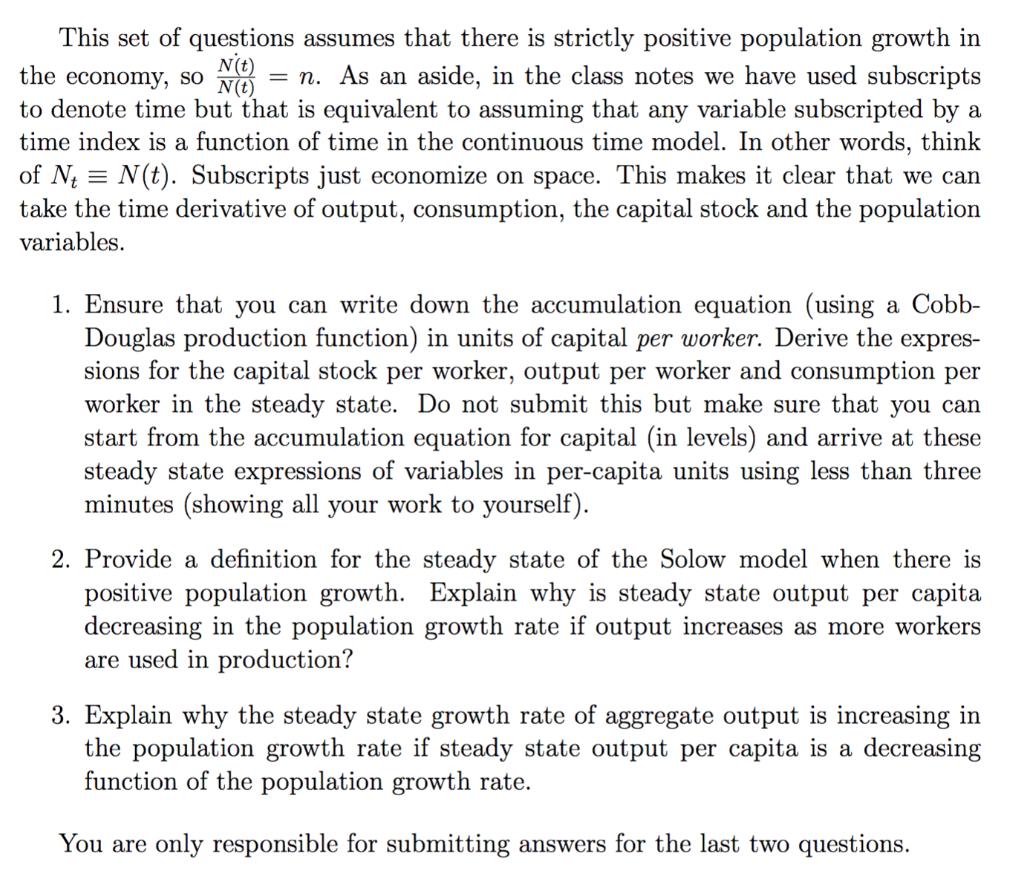Answered step by step
Verified Expert Solution
Question
1 Approved Answer
This set of questions assumes that there is strictly positive population growth in N(t) the economy, so = n. As an aside, in the

This set of questions assumes that there is strictly positive population growth in N(t) the economy, so = n. As an aside, in the class notes we have used subscripts N(t) to denote time but that is equivalent to assuming that any variable subscripted by a time index is a function of time in the continuous time model. In other words, think of N = N(t). Subscripts just economize on space. This makes it clear that we can take the time derivative of output, consumption, the capital stock and the population variables. 1. Ensure that you can write down the accumulation equation (using a Cobb- Douglas production function) in units of capital per worker. Derive the expres- sions for the capital stock per worker, output per worker and consumption per worker in the steady state. Do not submit this but make sure that you can start from the accumulation equation for capital (in levels) and arrive at these steady state expressions of variables in per-capita units using less than three minutes (showing all your work to yourself). 2. Provide a definition for the steady state of the Solow model when there is positive population growth. Explain why is steady state output per capita decreasing in the population growth rate if output increases as more workers are used in production? 3. Explain why the steady state growth rate of aggregate output is increasing in the population growth rate if steady state output per capita is a decreasing function of the population growth rate. You are only responsible for submitting answers for the last two questions.
Step by Step Solution
★★★★★
3.53 Rating (173 Votes )
There are 3 Steps involved in it
Step: 1
The steady state of the Solow model with positive population growth is the longrun equilibrium of th...
Get Instant Access to Expert-Tailored Solutions
See step-by-step solutions with expert insights and AI powered tools for academic success
Step: 2

Step: 3

Ace Your Homework with AI
Get the answers you need in no time with our AI-driven, step-by-step assistance
Get Started


